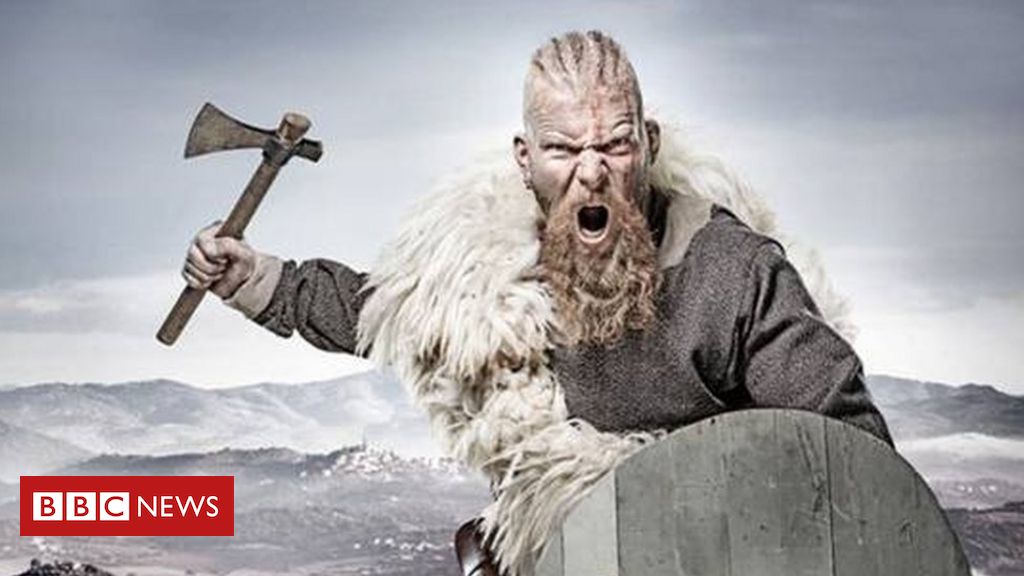Why weren’t the Vikings what we imagined?
3 min read

attributed to him, Getty Images
Vikings’ genes reveal that they don’t look like the most common images we have in popular culture
Popular culture often depicts Vikings as fierce, blond, blue-eyed warriors who sailed across the sea plundering coastal dwellers. But new scientific studies have disproved this myth.
An international group of evolutionary geneticists has been able to analyze the genetic origin of these famous Germanic warriors and come to surprising conclusions about their racial diversity.
“It all started when we were able to sequence the first ancient human genome,” Danish evolutionary geneticist Eske Willerslev, a professor at the University of Cambridge, UK, and the University of Copenhagen, Denmark, told the BBC.
“This has provided us with a huge amount of information from individuals that we can use to infer a human’s past,” he said.
“Once we saw that this was possible, we decided to start exploring the human past around the world. [para ver] How did we become who we are today.”
Over the course of six years, researchers analyzed human remains found at more than 80 archaeological sites, including Viking burials. To understand the past through ancient DNA, the team sequenced the genomes of 442 Viking age men, women, children and infants.
attributed to him, Getty Images
The teeth of the Vikings were necessary for us to access their DNA
One of the experts working on the project – Martin Sikora of the University of Copenhagen – noted that the remains in which the DNA was best preserved were teeth and a bone called petiole or temporal bone, which is part of the ear bone and is particularly hard.
By extracting genetic material from these sources, experts were able to compare the DNA of these peoples with the DNA sequences of more than 1,000 individuals from antiquity and about 4,000 modern humans. This study – the largest genetic analysis of Viking remains ever – showed that their genes came from southern Europe and Asia.
Willerslev explains, “The typical Viking is described as large, strong, and blond Scandinavian. But in fact, being blond was less common in Scandinavia in the Viking Age than it is now.”
“The Viking period is characterized by a greater interest in the Scandinavian Vikings from the rest of the world, but very limited interest in what was actually happening in Scandinavia.”
The Vikings’ trade routes extended to Canada on one side and Afghanistan on the other, so that the people actually had a much greater diversity than was thought.
This mixing with people from the south and east diversified their genetic makeup, giving rise to a variety of physical manifestations.
attributed to him, France Press agency
Contrary to popular belief, the Vikings were a diverse people.
“It is not possible to say with certainty whether there was a genetically homogeneous group that was very Scandinavian and similar everywhere,” Sikora says. “In fact, there was a lot of variety.”
The study also made it possible to determine the existence of many groups of Vikings who traveled to different parts of the world. “The Danes went mainly to England, the Norwegians went to Ireland, Iceland and Greenland, and the Swedes went to the Baltic,” Willerslev explains.
Research also indicates that Viking identity was not linked to genetic or ethnic origin, but rather to social identity.
The scientist who led the project says: “The Viking phenomenon is not a Scandinavian thing, in the sense that it is not race that determines whether someone is a Viking or not. It is a way of life.” Indeed, the researchers found Vikings who “did not have Scandinavian genes.”
attributed to him, France Press agency
The project was led by the famous Danish evolutionary geneticist Eske Willerslev
Willerslev wonders: “Thanks to this work, we change history, and by changing history, we also change our identity.”
The world considers this a positive thing. “At least, the debate is now about identity, and it’s a political debate based on real science.”
Have you seen our new videos on Youtube? Subscribe to our channel!

“Devoted food specialist. General alcohol fanatic. Amateur explorer. Infuriatingly humble social media scholar. Analyst.”




